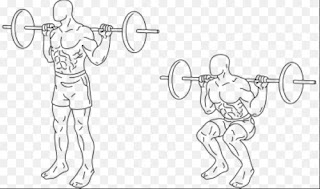Squatting is one of the fundamental movement patterns
everyone should train, but it is very important to understand and consider the
effect that individual variations in limb length and anatomical variances can
have on exactly how each person can and should squat.
Everyone cannot and should not squat the same way! Many trainers and individuals try to squat in
“perfect” form with feet flat, no heel lift, feet pointing forward, with back
upright and straight with butt to the grass but this is not only not possible
for some people – it can actually get them hurt!
One of the biggest factors determining how an individual can
squat is the relative length of their femur (upper leg bone) relative to their
lower leg (Tibia) and upper body length. In
general, the longer the femur and the longer the torso and the shorter the Tibia the greater the person
MUST lean their upper body forward in order to get thighs parallel to floor
much less going below parallel. This
puts a TON of stress on the low back and in extreme examples trying to get to
parallel is a BIG MISTAKE – swap for another exercise like a lunge or step up –
nobody wins when you get hurt exercising!
To gain a really strong understanding of these concepts
check out this fantastic article on this subject by Bret Contreras that
includes video links to a short, but powerful video presentation on this
subject using a stick model: https://bretcontreras.com/how-femur-length-effects-squat-mechanics/ .
Once you see it you will never try to force someone into a fixed squat
pattern again without really thinking it through.
In addition to limb length differences there can be dramatic differences in the shape of the acetabulum (the hip socket), the head of the femur (ball of the femur that fits into the hip socket), and the femoral neck angle. The end result can mean very different squatting mechanics are required. Here is a great article showing how these differences manifest themselves in squatting mechanics:https://bretcontreras.com/no-two-hips-are-the-same-how-anatomical-variance-can-affect-your-range-of-motion/


No comments:
Post a Comment